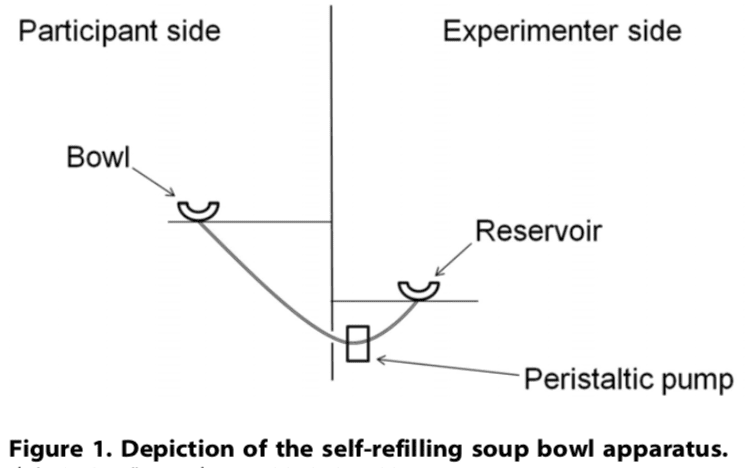created 2025-06-10, & modified, =this.modified
rel: Bites Infinity - Ian Stewart DJ Set Breakdown ASLSP
Thought
In college I gifted my roommate a package of Oreo cookies. I would covertly add more from my own stock whenever it reached an indistinguishable level of disorder/depletion.
Also known as forever soup, or hunter’s pot is a pot into which foodstuffs are placed and cooked continuously. The pot is never emptied all the way and ingredients and liquids are replenished as necessary. If properly maintained the stew can be cooked for decades or longer.
A batch of pot-au-feu was claimed by one writer to be maintained as a perpetual stew in Perpignan from the 15th century until World War II, when it ran out of ingredients to keep the stew going due to the German occupation.
Purported Experiment
Calls to mind, Automat.
Various experiments have been done with bottomless soup bowls to determine appetite regulation.
The original researcher, accused of misconduct, seemed to have had the first purported experiment but whether it actually happened was called into question.
I find a replicated study:
Imagine a bowl of soup that never emptied, no matter how many spoonfuls you ate—when and how would you know to stop eating? Satiation can play a role in regulating eating behavior, but research suggests visual cues may be just as important. In a seminal study by Wansink et al. (2005), researchers used self-refilling bowls to assess how visual cues of portion size would influence intake. The study found that participants who unknowingly ate from self-refilling bowls ate more soup than did participants eating from normal (not self-refilling) bowls. Despite consuming 73% more soup, however, participants in the self-refilling condition did not believe they had consumed more soup, nor did they perceive themselves as more satiated than did participants eating from normal bowls.
I also find,
Soup was added or removed from a transparent soup bowl using a peristaltic pump (see Figure 1). The soup bowl was presented in front of the volunteers and it was fixed to a table. A tall screen was positioned at the back of the table. This separated the participant from both the experimenter and a second table, supporting the pump and a soup reservoir. Throughout the experiment, the volunteers were unable to see beyond the screen.
The bottom of the soup bowl was connected to a length of temperature-insulated food-grade tubing. This connection was hidden from the participants using a tablecloth. The tubing fed through a hole in the table (immediately under the bowl) and connected to the pump and then to a reservoir of soup via a hole in the screen. The experimenter was able to manipulate the direction and rate of flow using an adjustable motor controller that was attached to the pump. The pre-heated soup was ‘creamed tomato soup’ (supplied by Sainsbury’s Supermarkets Ltd., London; 38 kcal/100 g).

And in 2024, with replicated results (of a lesser magnitude that originally reported):
This replication suggests that the main finding of the original paper can continue to influence how we think about eating behavior. Factors like an empty plate influence when people think that they are done eating. This research suggests that when people are trying to control the amount they eat, putting a portion on a plate or bowl and then finishing that portion can help them know when they are done eating. These external cues may often be more accurate than a feeling of hunger—particularly because it can take a while before food that is ingested makes a person feel like they have eaten enough.